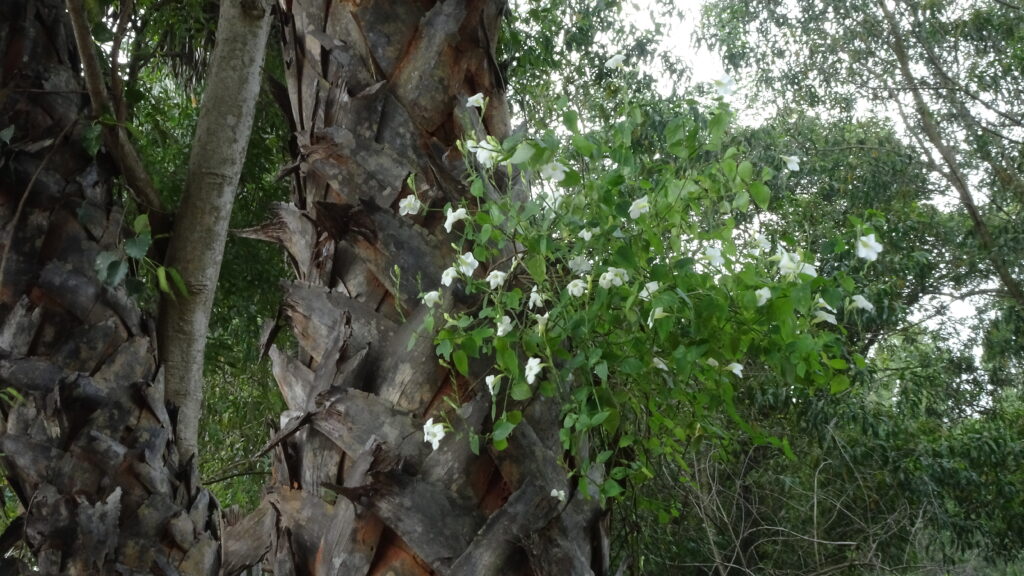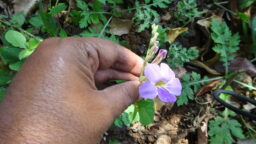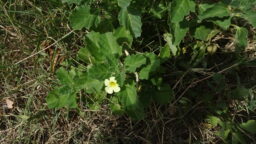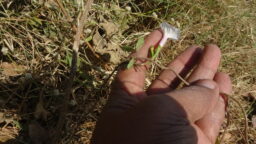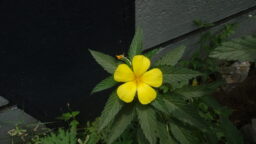
Common Name: Creeping flox glove, Ganges primrose. Tamil Name: Miti-kirai
Ganges primrose is a weak stemmed much spreading perennial shrub with wide distribution all over Indian sub-continent. The stem is rectangular in cross section and they spread around out to over a meter square on ground. The plant can grow erect to around two foot in height if sufficient support is available. They frequently root at nodes are keep spreading. Leaves are simple and arranged in opposite manner. The leaf stalk measure around 2-3 mm. The leaf length is around 3.1 cm. The leaf shape is ovate, base is attenuate and apex acute. The lower side of the leaf is velvety hairy: less so on the upper side. Inflorescence is a terminal raceme: each containing about 7-8 flowers. The funnel shaped flowers measure around 3.6 cm (petiole 3 mm). The calyx (shaped lanceolate) and flower have five lobes. The flower lobes are obovate and corolla is colored white with splashes of violet scattered around. The flower funnel holds four stamens in two pairs of unequal size (didynamous). The fruit is a club shaped capsule with four seeds. Seeds are dispersed by explosion. The plant leaf is used as a vegetable. The plant parts are whipped in water the foam produced is used as a soap substitute. The plant is easy to maintain in home gardens. However, most people consider it as a weed and have it removed. It is an important nectar plant for butterflies. The plant is also the larval host plant for Common spotted flat, Great eggfly, Danaid eggfly and chocolate pansy butterflies. This plant should be planted in butterfly parks. Ganges primrose flowers come in various colors. Commonly seen around Coimbatore district is the white-purple colored one. One can also find the white and cream colored flowering types in rural areas.
